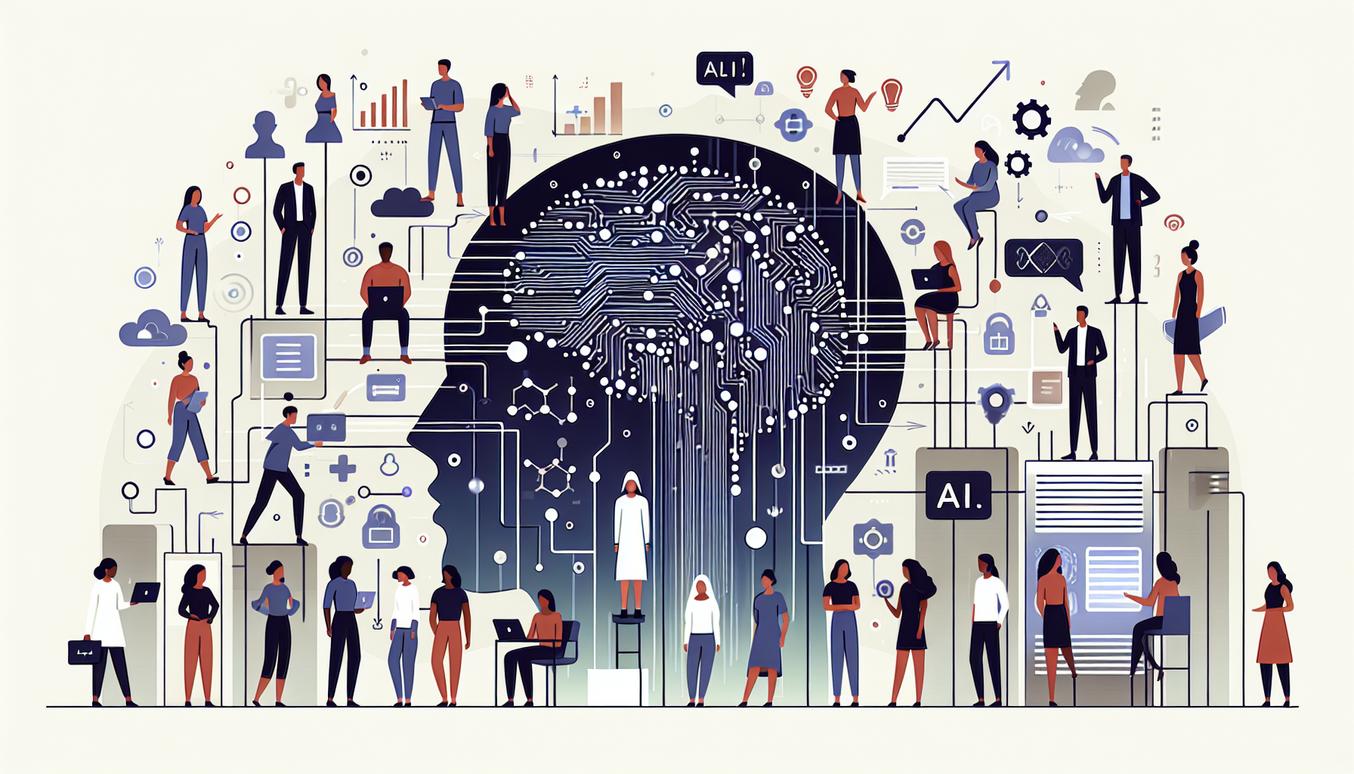The Strategic Leader’s Guide to AI Innovation: Blueprints for 2025 and Beyond
Table of Contents
- Overview: Why AI Innovation Matters
- The Current Landscape of AI Breakthroughs
- Core Technologies Explained
- AI Use Cases Across Industries
- Designing for Responsible AI and Governance
- Security Considerations and Robustness Testing
- Measuring Value: Metrics and Optimization Strategies
- Deployment Pathways: From Prototype to Production
- Implementation Roadmap with Milestones and Roles
- Illustrative Thought Experiments and Anonymous Scenarios
- Resources, Reading List and Toolkits
- Summary and Forward-Looking Considerations
Overview: Why AI Innovation Matters
Artificial Intelligence (AI) has transcended its origins in academic research to become the most transformative technology of our era. For technical leaders and strategic decision-makers, AI innovation is no longer a peripheral research interest but a central pillar of competitive advantage, operational efficiency, and market disruption. It represents the capacity to not only automate existing processes but to fundamentally reimagine business models, create new value streams, and solve previously intractable problems. Embracing a culture of continuous AI innovation is essential for organizational resilience and future growth. This guide provides a strategic blueprint for navigating the complexities of AI, from understanding core technologies to implementing robust, ethical, and value-driven solutions.
The Current Landscape of AI Breakthroughs
The field of AI is characterized by its exponential pace of development. Recent years have seen a dramatic acceleration in capabilities, moving beyond narrow, task-specific intelligence to more generalized and creative applications. The current landscape is dominated by advancements in large-scale models, particularly in the domains of language and vision. These breakthroughs have unlocked new paradigms in human-computer interaction, content creation, and data analysis. The key takeaway for leaders is that the pace of change is not slowing; a proactive strategy for monitoring, evaluating, and integrating emerging **AI innovation** is critical for staying ahead of the curve. The focus has shifted from mere data processing to sophisticated reasoning, synthesis, and generation.
Core Technologies Explained
A foundational understanding of key AI technologies is crucial for effective strategic planning. While the field is vast, three pillars form the basis of most modern **AI innovation**.
Neural Networks
At the heart of modern AI are Artificial Neural Networks (ANNs), computing systems inspired by the biological brain. They consist of interconnected nodes, or “neurons,” organized in layers. By processing vast amounts of data, these networks learn to recognize patterns, make predictions, and classify information. Deep learning, which involves neural networks with many layers (deep architectures), has been the driving force behind breakthroughs in image recognition, speech processing, and more.
Generative Models
Unlike models designed for prediction or classification, Generative Models are designed to create new, original content. This content can take the form of text, images, code, or synthetic data. Large Language Models (LLMs) and diffusion models are prominent examples. This area of AI innovation is powering everything from creative content tools to advanced simulation environments, opening up unprecedented opportunities for automation and creativity.
Reinforcement Learning
A third powerful paradigm is Reinforcement Learning (RL). In this approach, an AI agent learns to make a sequence of decisions in an environment to maximize a cumulative reward. Instead of being trained on a static dataset, the agent learns through trial and error. RL is the technology behind major advancements in robotics, autonomous systems, game playing, and resource optimization problems in complex systems like supply chains and energy grids.
AI Use Cases Across Industries
The practical application of **AI innovation** spans virtually every sector, creating tangible value and driving transformative change.
- Healthcare: AI is revolutionizing medical diagnostics by analyzing imaging data (X-rays, MRIs) with superhuman accuracy. It accelerates drug discovery by modeling molecular interactions and personalizes treatment plans based on patient data.
- Finance: In the financial sector, AI algorithms are critical for real-time fraud detection, algorithmic trading, and credit risk assessment. AI-powered chatbots and robo-advisors are also enhancing customer service and personalizing financial advice.
- Automation and Manufacturing: AI drives intelligent automation in factories through predictive maintenance, which anticipates equipment failure before it occurs. It also optimizes complex supply chains by forecasting demand, managing inventory, and planning logistics with unparalleled efficiency.
Designing for Responsible AI and Governance
As AI systems become more powerful and autonomous, the need for ethical oversight and robust governance becomes paramount. A commitment to Responsible AI is not just a compliance requirement but a prerequisite for building trust and ensuring long-term success. An effective governance framework for **AI innovation** must address several key principles:
- Fairness and Bias Mitigation: Actively identify and correct biases in training data and model behavior to ensure equitable outcomes for all user groups.
- Transparency and Explainability (XAI): Develop systems whose decision-making processes can be understood by human operators. This is crucial for debugging, auditing, and building user trust, especially in high-stakes applications.
- Accountability and Human Oversight: Establish clear lines of responsibility for AI system outcomes and ensure that human intervention is possible in critical decision-making loops.
- Privacy and Data Governance: Implement stringent data handling protocols that respect user privacy and comply with regulations, using techniques like data minimization and federated learning where appropriate.
Security Considerations and Robustness Testing
AI systems introduce novel security vulnerabilities that require specialized attention. Securing the **AI innovation** pipeline is as critical as securing traditional software. Decision-makers must be aware of and plan for these unique threats.
Adversarial Attacks
These are attacks where malicious actors introduce carefully crafted, often imperceptible inputs to a model to cause it to make a wrong prediction. For example, a minor modification to an image could cause a computer vision system to misclassify an object entirely. Robustness testing involves simulating these attacks to harden the model against them.
Data Poisoning
This attack vector involves corrupting the training data to compromise the integrity of the resulting model. Malicious data can be injected to create backdoors or degrade the model’s performance on specific tasks. Strong data validation and provenance checks are essential countermeasures.
Model Theft and Inversion
Protecting the intellectual property of a trained model is crucial. Attackers may attempt to steal a model by repeatedly querying it and training a copycat. Model inversion attacks aim to reconstruct sensitive training data from the model’s outputs, posing a significant privacy risk.
Measuring Value: Metrics and Optimization Strategies
The success of an AI innovation initiative cannot be measured by technical metrics like model accuracy alone. True value is realized when AI solutions deliver on key business objectives. A comprehensive measurement framework should include:
- Business KPIs: Link AI performance directly to business outcomes. Examples include Return on Investment (ROI), reduction in operational costs, increase in revenue, improvement in customer satisfaction scores (CSAT), or reduction in churn rate.
- Operational Metrics: Measure the efficiency and impact on processes. This could be the time saved per task, the increase in production throughput, or the reduction in error rates.
- Technical Performance Metrics: While not the whole picture, metrics like model accuracy, precision, recall, inference latency, and computational resource usage are essential for ongoing optimization and performance management by technical teams.
Deployment Pathways: From Prototype to Production
Moving an AI model from a research prototype to a scalable, reliable production system is a complex journey known as MLOps (Machine Learning Operations). This process involves significant engineering challenges that go beyond model development. Leaders must plan for the entire lifecycle.
Key Stages in the Deployment Pathway
- Prototyping: The initial phase where data scientists explore data and build a proof-of-concept (PoC) model to validate the feasibility of an idea.
- Packaging and Integration: The model is containerized and integrated into the broader application architecture via APIs. This requires close collaboration between data scientists and software engineers.
- Testing and Validation: The integrated system undergoes rigorous testing for performance, scalability, and security in a staging environment.
- Deployment and Monitoring: The model is deployed to production. Continuous monitoring is essential to track its performance in the real world and detect issues like model drift, where performance degrades over time as data patterns change.
- Retraining and Iteration: A feedback loop is established to periodically retrain the model with new data to maintain its accuracy and adapt to evolving conditions. This iterative process is a hallmark of successful **AI innovation**.
Implementation Roadmap with Milestones and Roles
A structured roadmap is essential for guiding your organization’s journey into **AI innovation**. The following phased approach, designed for implementation starting in 2025, provides a clear path forward.
Phase 1: Strategy and Discovery (2025 Q1-Q2)
- Milestones: Identify high-impact business problems, assess data readiness, and define initial project scope. Form a cross-functional AI steering committee.
- Key Roles: AI Strategist, Business Analyst, Data Architect.
Phase 2: Prototyping and Validation (2025 Q3-Q4)
- Milestones: Develop a proof-of-concept for the highest-priority use case. Validate technical feasibility and estimate potential business value. Establish ethical guidelines.
- Key Roles: Data Scientist, Machine Learning Engineer, Ethics Officer.
Phase 3: Production and Scaling (2026 and beyond)
- Milestones: Deploy the first model into production. Establish a robust MLOps pipeline for monitoring and retraining. Begin scaling efforts to other business units.
- Key Roles: ML Operations Engineer, Software Engineer, Product Manager.
Illustrative Thought Experiments and Anonymous Scenarios
Scenario 1: Predictive Maintenance in Logistics
A global logistics company wants to reduce costly downtime from unexpected vehicle breakdowns. Their **AI innovation** initiative involves collecting sensor data (engine temperature, tire pressure, vibration) from their fleet. A machine learning model is trained to predict the probability of component failure within the next 30 days. This allows the maintenance team to proactively service vehicles, converting unscheduled downtime into planned maintenance, significantly improving fleet availability and reducing costs.
Scenario 2: Content Personalization for a Media Platform
An online media provider aims to increase user engagement and reduce subscription churn. They deploy a reinforcement learning system that personalizes the user’s home feed in real-time. Instead of just recommending content based on past viewing history, the system experiments with showing different types of content and learns from immediate user interactions (clicks, watch time) to dynamically adapt its recommendations, creating a more engaging and sticky user experience.
Resources, Reading List and Toolkits
Continuous learning is fundamental to staying current with **AI innovation**. Strategic leaders should familiarize themselves with the foundational concepts and tools that power the field.
- Key Concepts: Beyond the core technologies, understanding adjacent fields like Natural Language Processing (NLP) is crucial for applications involving text and language.
- Open-Source Toolkits: The vast majority of AI development is built on open-source software. Key frameworks include TensorFlow and PyTorch, which provide the building blocks for creating and training sophisticated models.
- Academic and Research Hubs: Platforms like arXiv are invaluable for accessing the latest pre-print research papers, often months or years before they are formally published. Staying connected to the research community provides a glimpse into future trends.
Summary and Forward-Looking Considerations
Successfully harnessing AI innovation is a strategic imperative that requires more than just technical expertise. It demands a holistic approach that integrates technology, business strategy, ethical governance, and a culture of continuous learning. By understanding the core technologies, identifying high-value use cases, and implementing a structured roadmap, organizations can move from exploration to impactful, production-grade AI solutions.
Looking ahead, the frontier of **AI innovation** will be defined by trends like multimodal AI (models that understand and process information from multiple sources like text, images, and audio simultaneously) and the push towards more efficient, on-device AI (edge AI). The leaders who succeed will be those who not only adopt AI but who build a resilient, adaptable, and responsible framework to guide its evolution within their organization.









